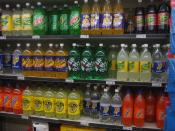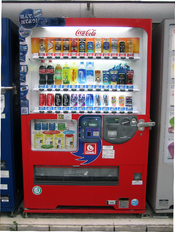1. Why is the soft drink industry so profitable?
The soft drink industry is worth $60 billion in the US and its major players Coca-Cola and PepsiCo both achieved an average annual growth of 10% between 1975 and 1995. While per capita consumption of soft drinks seems to have reached its limit in the US and Canada (only 2% annual growth between 1992 and 1999), emerging countries, such as Brazil (12% annual per capita consumption growth) and Philippines (9% annual per capita consumption growth), along with the overall growth of the world population, show that the global market is far from saturation. Such an attractive industry should attract many new investors, which in the long-run would limit the industry's profitability. However, a closer look at the market structure reveals the reasons why the soft drink industry is highly profitable for the established firms, while it is mainly inaccessible for new entrant firms.
The profitability of an industry is mainly determined by three factors : the value of the product to the customers, the intensity of competition and the bargaining power of the producers relative to their suppliers. These criteria can be specified by using Michael Porter's "forces of competition framework" :
* Limited Threat by Substitute Products:
The more substitute products are available, the more elastic will the demand be with respect to price; that is the more sensitive will customers be to price increases. A profitable industry would ideally have a demand totally inelastic to price increases. Since the soft drink industry (including water and other non-carborated drinks) satisfies a very basic human need, few substitute products are available and demand is therefore relatively inelastic. Within the soft drink industry, however, over 30 different substitute brands exist for the customer. It is therefore relatively easy for a customer to...


